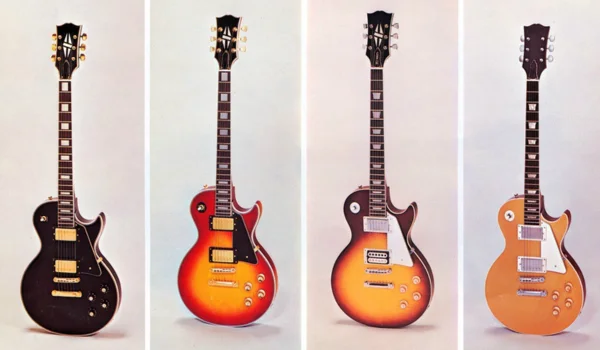The term “Ibanez Lawsuit Guitars” refers to a pivotal moment in the 1970s when Japanese guitar manufacturer Ibanez, under the parent company Hoshino Gakki, faced legal action from Gibson’s parent company, Norlin Corporation. This lawsuit centered around the alleged infringement of Gibson’s trademarked “open book” headstock design, which Ibanez had incorporated into its Les Paul-style guitars. The case not only highlighted the complexities of intellectual property rights in the musical instrument industry but also marked a turning point in Ibanez’s design philosophy and the broader guitar manufacturing landscape.
Background: The Rise of Japanese Guitar Replicas
In the 1970s, Japanese guitar manufacturers, including Ibanez, began producing high-quality replicas of popular American guitar models, such as the Gibson Les Paul and Fender Stratocaster. These replicas were often more affordable and, in some cases, matched or exceeded the quality of their American counterparts. Ibanez’s Les Paul copies, particularly the Model 2350, closely mimicked Gibson’s design elements, including the distinctive headstock shape, inlays, and overall aesthetics. These instruments gained popularity among musicians seeking quality guitars at lower prices.
The Legal Dispute: Gibson vs. Ibanez

On June 28, 1977, Norlin Corporation filed a lawsuit against Elger Company, the U.S. distributor for Ibanez, in the Philadelphia Federal District Court. The lawsuit, titled “Gibson Vs. Elger Co.,” alleged that Ibanez’s use of the “open book” headstock design constituted trademark infringement. Gibson sought to protect its brand identity and prevent consumer confusion arising from the striking similarities between the two brands’ guitars. Interestingly, by the time the lawsuit was filed, Ibanez had already begun phasing out the contested headstock design. The case was settled out of court in early 1978, with Ibanez agreeing to cease using the disputed headstock design and to stop employing Gibson-like model names in its marketing materials. The case was officially closed on February 2, 1978.
Impact on Ibanez and the Guitar Industry
The lawsuit prompted Ibanez to shift its focus from producing replicas to developing original designs. Post-lawsuit, Ibanez introduced innovative models such as the Iceman and the Destroyer, which showcased the company’s commitment to unique aesthetics and features. This transition not only helped Ibanez establish its own identity in the guitar market but also influenced other manufacturers to prioritize originality over imitation. The lawsuit era underscored the importance of intellectual property rights and set a precedent for how design similarities could lead to legal challenges in the musical instrument industry.
Legacy of the Lawsuit Era
Today, “lawsuit era” Ibanez guitars are highly sought after by collectors and musicians alike. These instruments are celebrated for their craftsmanship and historical significance. The legal dispute between Gibson and Ibanez serves as a landmark case in the realm of intellectual property law within the music industry, highlighting the delicate balance between inspiration and infringement. It also marks a period of transformation, where companies like Ibanez evolved from imitators to innovators, leaving a lasting impact on guitar design and manufacturing.
In summary, the Ibanez lawsuit guitars symbolize a critical juncture in guitar history, where legal boundaries prompted a wave of creativity and originality, reshaping the industry’s approach to design and competition


 Oliver Johnson is LawScroller’s Senior Legal Correspondent specializing in civil litigation, class actions, and consumer lawsuit coverage. He breaks down complex settlements and court decisions into clear, practical guidance for readers.
Oliver Johnson is LawScroller’s Senior Legal Correspondent specializing in civil litigation, class actions, and consumer lawsuit coverage. He breaks down complex settlements and court decisions into clear, practical guidance for readers.